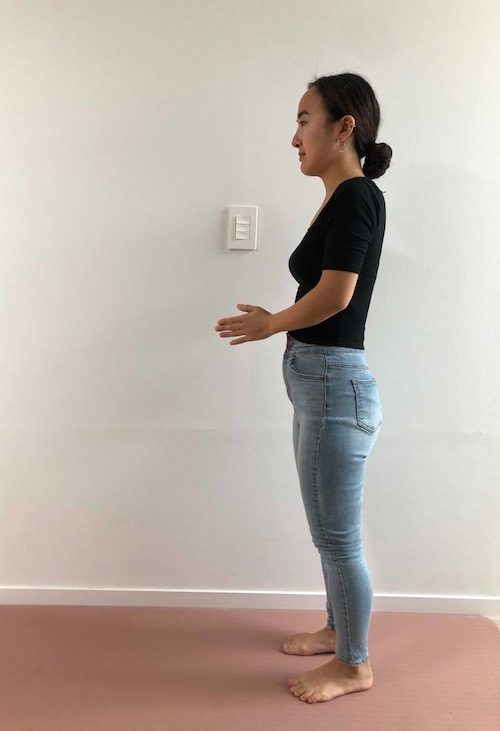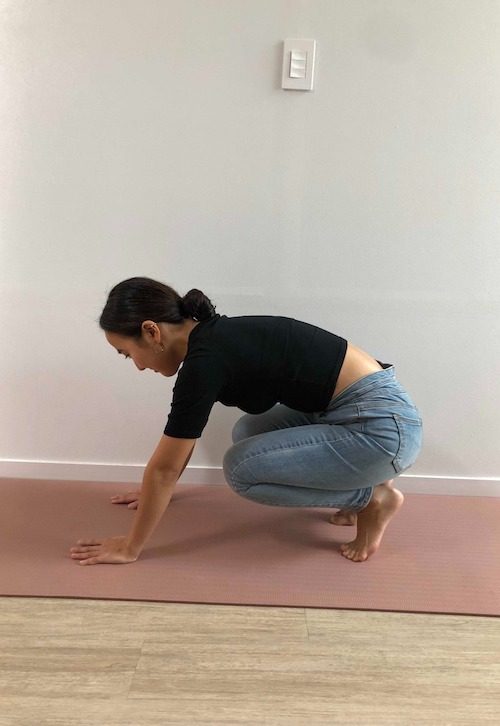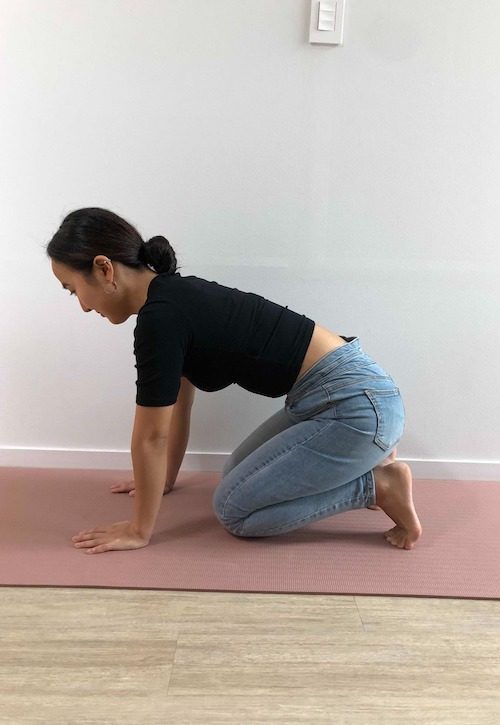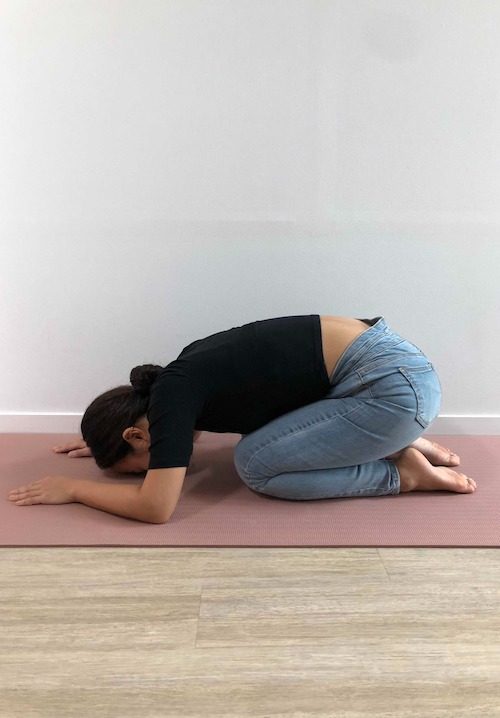When using a screen, we tend to become less aware of the body. The interactivity of our devices is so appealing, that we tend to use them to fill any moments of boredom, with a quick check of social media or a search to look up something we were thinking of. This can make it hard to remain aware of our physical environment or the state of our body.
Whilst using our phone, tablet, or laptop, we are constantly interacting. We react to what we see on the screen, as we scroll infinitely or click from page-to-page. When our path through this digital jungle brings us to a dead end, we react instead to our own thoughts. We transpose our thoughts onto the screen and begin another frivolous journey through cyberspace.
Even after we leave our device, the mind is not settled. We may no longer have an entire virtual world at our fingertips, but our thoughts keep arising quickly, automatically, and persistently. It can take time to relax and transition to a more peaceful and intentional state of mind.
Becoming aware of the body
Body awareness helps us slow down the Non-Stop Thinking of the mind. That’s why many meditation techniques use the body as a focus. For example, practising awareness of the breath, or scanning the body from head to toe.
Sometimes, in particular after many hours of interacting with a device, it can be difficult to settle the mind with these calm meditation techniques. It’s still helpful to practice meditation, even if it only brings greater awareness of how restless the mind is. But practically, people often turn to meditation because they want to shift gears, slow down, and relax.
For some, physical activities can be more effective in shifting our state of mind from Non-Stop Thinking to relaxation and greater body awareness. Whether you choose walking, yoga, running, lifting weights – any of these activities can help. In fact, with the right attitude, these activities can be considered a form of active meditation.
Regular moderate exercise is recommended by health authorities around the world for those who are able. (For those living with severe disability this may not be possible, but there are other techniques for practising mindfulness and finding a peaceful state of mind.)
Light physical activities
Some days, even the most able-bodied amongst us feel physically exhausted. Our body might be recovering from previous days, but we still wish to use our bodies. We can instead find light activities that allow us to use the body without getting exhausted.
Our household chores make excellent light activities: brushing or mopping the floor, gardening, or putting the dishes away.
Some people enjoy the practice of yoga, but since practising yoga at home often involves following an instruction video (as a beginner), we may like a simpler activity that allows us to take a break from the screen.
The practice of bowing is an fantastic alternative. Bowing is simple, not too strenuous, yet it is also active and brings one’s attention back to the body and the present moment.

Bowing: worship, ritual, or exercise?
In the Western world, many people are wary of bowing. As a social gesture, it seems overly dramatic. The full bow has religious connotations, which may be off-putting to secular people and to some religious people who associate it with idol worship or other religions which they disagree with.
Bowing exists as a ritual in most religions, both Eastern and Western, though can vary greatly in meaning and practice between different religions and denominations. Perhaps most prominently, Islamic prayer takes the form of a bow, but there is a tendency to bow in prayer to a lesser extent in Christianity and Judaism. Sikhs bow only to their sacred text, Hindus may bow to their guru in respect, and Buddhists bow in respect of the Buddha and other teachers.
Bowing in Korean Buddhism
The bowing ritual which caught my attention is from Korean Buddhism. I associated Buddhism with meditation, but whenever I visited a Buddhist temple in Korea, I would more often see people bowing than meditating. This was not a slight tip of the head (common in Korea as a greeting), but a full bow (“prostration”) so that knees, head, and hands are touching the ground.
Understanding that the Buddha was a man, not a god, it seemed strange to me that people would bow down in worship of him in front of his statue. I sought to understand this strange ritual.
Perhaps for some people who see Buddhism as their religion, the Buddha has taken on supernatural qualities and is worshipped and prayed to in a similar manner to the Christian God. This is how it sometimes appears to me as an observer: I imagine that Buddhist practitioners have elevated Buddha to the status of god, perhaps because there is a kind of comfort in having faith that such a being will guide us through life. But whether there are many Buddhists who really see it this way, I do not know.
The official explanation of this bowing ritual is far more palatable to me as someone from a secular background. Although Buddhists may bow towards the Buddha, it is not idol worship. According to Korean Buddhism, published by the Korea Buddhist Order Association, bowing is used as a sign of respect for teachers (the Buddha and others), the Dharma (teachings) and Sangha (community of practitioners). However, more than anything, bowing is a practice benefiting the practitioner, and through them, others and the world.
Bowing is a daily practice for Buddhist monks as well as many lay Buddhist practitioners. It brings about humility and weakens attachment to the self. As an additional benefit, it keeps practitioners physically fit.
Many Korean Buddhists follow a tradition of 108 bows, which can be practised daily. These bows may follow a recital, with statements such as:
“Paying deep respect to life, I bow”
“Being humble and letting bad habits fall away, I bow”
“To be clear and at peace, in a world of turbid chaos, I bow”
There are many different versions of these recitals, but the intention is always to help establish and bolster moral virtues and strengthen Buddhist practices which will reduce suffering in the oneself and the world.
If you would like to try this bowing practice following a recital, you may like to follow this recital in English, provided by the Korean Templestay programme:
How to bow
Whether you follow a recital or not, bowing can be beneficial for mind and body. Dr Kim Jaeseong, a Catholic, recommends this practice for everyone regardless of religion. He once tried the practice of 108 bows reluctantly, as a non-Buddhist, but found it so helpful that he recommends it to everyone and wrote a book 108 Bows a Day: the Ten Minute Miracle Saving My Body.
According to Dr. Kim, “The important matter is to make my body and mind healthy and peaceful through bowing exercise. Then the number doesn’t matter if it is 108, 107, or 109. Training mind and body is necessary for every one, regardless of religion.”
We can practice bowing for health, in such a way as to not put too much pressure on knees.
Step-by-step instructions for bowing
There are many variations on bowing, but this variation includes stretching the arms behind the head. This arm movement increases the benefits of bowing as exercise, working the shoulders and core.

1. Stand with your feet shoulder-width apart and bring your palms together in front of your chest. 
2. Keeping you palms together, briefly drop your arms down, to start the movement. 
3. Slowly raise the arms straight up and stretch, until your arms are a little behind your head. 
4. Bend forwards from the waist, until your body is parallel to the floor and your arms are hanging straight down, allowing your hands to be apart. 
5. Bend your knees a little so that your hands rest on the floor in front of you. 
6. Allow your knees to gently land on the floor, supported by your hands. 
7. Touch your elbows and forehead to the floor. 
8. Push your body back up onto your feet, stand up, and finally bring your palms together in front of your chest again.
TLDR; bowing is a simple activity with health benefits: try it!
It’s worth trying out this practice, especially if you find physical activity easier than sitting meditation. You could stick with the tradition 108 bows, or alternatively, to save counting, set a timer and do it for a set number of minutes.
This practice of bowing is not intended as strenuous exercise, only a light physical activity for mindfulness. To ensure this remains a gentle activity, you can slow down the movement, pausing as you touch the floor and when you stand up. If you would find 108 bows exhausting, limit to an appropriate number for your fitness level. For many people, 10 or 20 bows may be more realistic, and even for the fittest, it’s easier to slot into a busy day.
I suggest trying this for at least a week to see the full benefit. You could do this daily or every 2 or 3 days if your body feels sore.
How did you find bowing? Did the practice help you? Let us know in the comments below.








